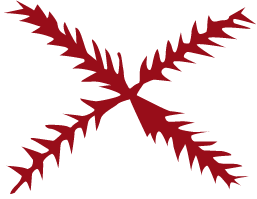We steward, protect, and share Tr’ondëk Hwëch’in culture and heritage resources.

Anything and everything you do, the way you live is your heritage. I walk it, that’s who I am.
Elder Angie Joseph-Rear
The Tr’ondëk Hwëch’in Heritage Department works in collaboration with community and knowledge holders to continue the important work of recognizing, recording, protecting and participating in our heritage as First Nations people of this land. Tr’ondëk Hwëch’in heritage is dynamic and evolving; it encompasses our way of life as part of the land. This has been the foundation of our laws, practices and values for countless generations.
Our heritage is rooted in the supreme value of respect for every person and every living thing. We work with reciprocity, humility, adaptability, openness, responsibility, honour, truthfulness and self-reliance to serve the collective interests of our greater community.
The Heritage Department as we know it today began after the signing of the Final Agreement in 1998. At that time, Heritage was a small component of a larger Social Programs Department. As the social and educational needs of our new and emerging government grew, and with direction outlined in Chapter 13 of the Final Agreement, the Cultural and Education department was formed.
At its inception, the Cultural and Education department had two staff members: a Director and a Community Education Liaison coordinator. Over the next several years, the department grew dramatically and went through many phases, missions and incarnations before becoming simply known as the Heritage Department.
“Our heritage is a way of life in which knowledge and understanding of history, culture and survival is passed on from generation to generation by parents and Elders.”
Tr’ondëk Hwëch’in Heritage Act


The Heritage Department in its current iteration is committed to maintaining a motivated team of heritage professionals with the capacity to effectively manage and deliver our heritage resource programs. We work as a team to:
- Put together a comprehensive record of Tr’ondëk Hw’ëchin heritage
- Ensure heritage resources are protected for future generations
- Have our heritage recognized, supported and respected by everyone
Today the Heritage Department oversees a wide range of projects and is steered by the elected Chief and Council and the Elders Council.
The Heritage team currently oversees:
- Tr’ondëk-Klondike – UNESCO World Heritage Site Inscription
- The Stewardship of Nun Cho Ga, our baby mammoth
- Ch’ëdähdëk / Forty Mile preservation in partnership with Yukon Government
- Heritage collections, archive and library
- Tr’ondëk Hwëch’in Cultural Camps
- Hän Language revitalization
- Dänojà Zho Cultural Centre Programming

Upcoming projects at the Heritage Department:
In 2022, TH Council passed a resolution to create a purpose-built heritage facility to meet the department’s needs. The groundwork for the new Heritage Complex is now underway next to the Chief Steve Taylor Administration building on Front Street.
The new TH Heritage Complex will be a house of living culture for our Citizens and community. The public space will serve as a hub for Hän language revitalization, relearning of traditional craft, and repatriate our heritage resources. It will be a space for archive and records preservation, cultural and language programming, the exchange of traditional knowledge and the development of culturally appropriate histories.
“Our culture is our inheritance. When we live our culture we are keeping it alive, we are sustaining it. You don’t know traditional knowledge, you have to live it. You have to be a First Nations person to understand – the way we grow up, the way we hunt, the way we live on the land. The land is our university and our church. We went to school out on the land. That’s our university.”
Tr’ondëk Hwëch’in Heritage Act
Documents, Applications and Forms
Gwich’in people stayed at the seasonal settlement of Black City. People then dispersed; many moving to Moosehide, Old Crow and Fort McPherson.
From the height of the Gold Rush period to about 1920, the principal Tukudh and Tetl’it Gwich’in settlement in the area was Black City or Blackstone Village. Some other isolated camps and cabins were located in the Blackstone Uplands, including Calico City, Michelle’s (Old Man Mitchell) cabin, Noil’s (?) cabin, and Alfred Bonnet Plume’s camp.
Takudh Gwich’in and Teetlit Gwich’in people made annual winter trips to Dawson to sell tons of caribou meat that they had hunted on the way. During these visits, they stayed at Moosehide. A number of the Takudh later settled at Moosehide.
Many Gwich’in people died of diseases introduced by stampeders. Reverend Martin tells of digging many graves for people who died of influenza.
The first of the annual police patrols between Dawson City and Fort McPherson, then in later years over the sea ice to Herschel Island. This route was nearly 1000 miles (1600 km) round trip. First Nations guides and hunters were important to the success of these long winter trips.
Fox farming became popular in the Yukon and a number of First Nations people made a good living trapping and selling live foxes. In 1913, the Dawson Daily News reported that Gwich’in people trapped four live foxes and delivered them to Dawson.
10 December, Inspector Frank Fitzgerald led a group of three men on the annual winter patrol between Fort McPherson and Dawson City. For the first time, the patrol travelled from north to south rather than from Dawson to Fort McPherson. Two weeks later, the patrol hired Esau George to guide them across the portage to the Peel River, the last time they were seen alive.
Feb., when the patrol had not reached Dawson by late February, Inspector Dempster was sent out with a search party to find the missing men. They found the bodies of Lost Patrol on March 21 and 22, within a day’s travel of Fort McPherson; then delivered the news to Dawson, traveling 475 miles by dogsled in 19 days.
The failure of Fitzgerald’s patrol was later ascribed to an inexperienced guide, inadequate food and gear for living off the land, and excessive cold, heavy snows and sparse game. As a result of this tragedy, the police-built rest cabins and supply caches along the patrol route and always hired a capable First Nations guide and hunter.
The last resident of Black City moved to Fort McPherson.
February, Cat train crews began building a winter road built from Flat Creek, south of present Dempster Corner, to Eagle Plains and Peel River Plateau.
Construction of highway begins. Oil discovered at Eagle Plains.
The new road was named after Inspector William John Duncan Dempster of the Royal Northwest Mounted Police.
18 August, official opening of the Dempster Highway, Canada’s first all-weather road to cross the Arctic Circle at Flat Creek. Final cost of the highway was nearly $103 million.
Dempster Interpretive Centre opened at Tombstone Campground in a renovated trailer.
Tombstone Park was the subject of Tr’ondëk Hwëch’in Land Claims negotiations.
February 9, 388km² withdrawn from disposal (subsurface withdrawal) for Tombstone Park.
16 July, Tr’ondëk Hwëch’in signed their final and self government agreements.
15 September, land claim & self-government agreements became effective.
Celebration of the 25th Anniversary of completion of the highway. YK and NWT sponsored events in various locales and communities along the length of the highway. Tr’ondëk Hwëch’in citizens celebrated their history on the highway at Black City on August 18th. In October, the Yukon Cabinet officially established Tombstone Territorial Park.
